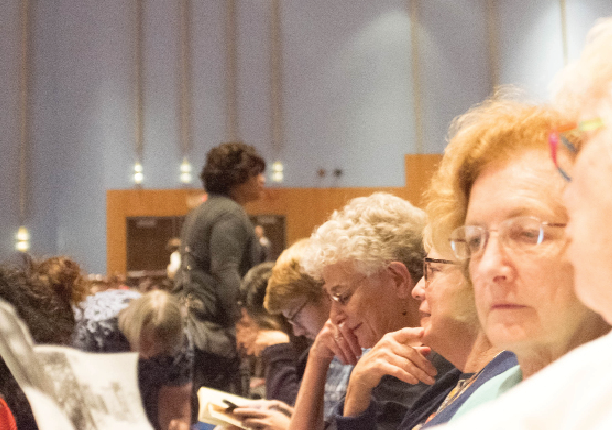Between Coates and Me
Coates solidifies impact through talk at ETHS
Audience members from the Evanston community enjoy the interview.
November 3, 2017
Although Between the World and Me is no longer a requirement for students to read, Ta-Nehisi Coates remains relevant and impacts the school through his visit on Oct. 18.
“Coates has changed my academic career by teaching me the importance of using common language,” junior Liana Wallace says. “Complex issues need to be broken down into tangible concepts so that their true intent can be clearly expressed and articulated.”
On Oct. 18, Coates came to ETHS as a part of his 2017 book tour across the country. The event consisted of a conversation between principal Marcus Campbell and Coates, followed by questions from students in the audience.
“A lot of what he writes is connected to a lot of what black folks have been writing about for a very long time,” Campbell says. “I wanted the audience to see this continuity of thought within his ideas.”
Coates released his new book, We Were Eight Years in Power, on Oct. 28. The book is a reflection on race based on Barack Obama’s presidency as well as his own evolution as a writer, within a series of essays. The majority of the essays were published in The Atlantic.
Coates is an American essayist, journalist and writer who explores race relations within the United States, perhaps most notably is his book Between the World and Me, which won the National Book Award for nonfiction. The book, up until this previous summer, was a summer reading requirement for AP Language and Composition. Now, it is one of a few books that students may choose from.
Between the World and Me is written in the form of a letter from Coates to his son, in which he speaks about his childhood in Baltimore’s inner city. He touches upon his daily fear of violence and the emergence of the crack cocaine epidemic. This memoir leads to the idea that American society is structured to promote white supremacy.
“The book is reflective of my life because the topics discussed have always been on my mind since I was younger,” junior Meadgine Ilmet says. “I’ve always struggled to talk about the oppression people like me faced without offending the perpetrators.”
The book has had a substantial impact on students by solidifying or changing their preconceived notions of race relations within the US.
“Between The World and Me reinforced the idea that I’m not alone in feeling disadvantaged and left out in this country,” Ilmet says. “The country simply wasn’t made with me in mind and yet I’m virally a part of its success.”
Other works by Coates, such as A Case for Reparations, have been integrated into the classrooms as a way to educate students about racial tension. His work has been used to teach persuasive writing techniques.
Coates includes a blend of personal experience narrative and critical argument, providing an example of an argumentative essay. Moreover, Coates’ work is contemporary, meaning it is reflective of the issue students face today.
“I have tried more and more to make sure that the texts being read in my class are reflective of the demographic realities of my students,” AP Language and Composition teacher Joshua Brown says. “Which means radically drawing back on books about white cis males, a group which makes up a disproportionate percentage of books read in high schools.”
These texts are additionally used to shape readers into activists of whatever topic they deem fit.
“My introduction to Coates was from The Case for Reparations. In short, Coates made me see things in much simpler and profound terms – racism has been and continues to be a tool – perhaps the most powerful tool – that works in service of economic plunder,” Brown says. “Once I saw things like that I recognize the nature of the imperative it placed upon me as a white person, to act, not to feel guilty about the status quo but to confront it as honestly as I could.”



















